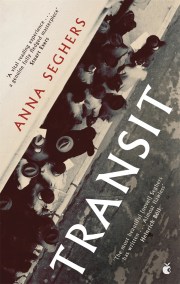
Anna Seghers
ANNA SEGHERS (1900-1983) was born Netty Reiling in Mainz, Germany, into a Jewish family. In 1924 she received a doctorate in Art History from the University of Heidelberg, and in the same year her first story, written under the name Antje Seghers, was published. During this time, she came into contact with many left-wing intellectuals, including her husband, a Hungarian economist, and began writing in earnest. By the end of 1928, Anna Seghers had joined the Communist Party, given birth to two children and was awarded the Kleist Prize for her first novel, The Revolt of the Fishermen of St Barbara.
As Jew, a Communist and a revolutionary writer, she was blacklisted in Nazi Germany and left for France in 1933 with her family. After the Nazi invasion in 1940, she was forced to flee again and, with the aid of Varian Fry, she and her family sailed from Marseilles to Mexico on a ship that included Victor Serge, André Breton and Claude Lévi-Strauss among its passengers.
Seghers gained international recognition with The Seventh Cross (1942), which became a bestseller. It was the basis for the 1944 MGM film starring Spencer Tracy and was one of the only depictions of Nazi concentration camps during the Second World War in either literature or film. It has been translated into more than thirty languages.
After the war Seghers moved to East Berlin, where she became a prominent figure of East German letters, actively championing the work of younger writers from her position as president of the Writers Union. Among Seghers’ internationally acclaimed works are The Seventh Cross; Transit (1944); Excursion of the Dead Girls (1945); The Dead Stay Young (1949); and the story collection Benito’s Blue (1973).
Read More


